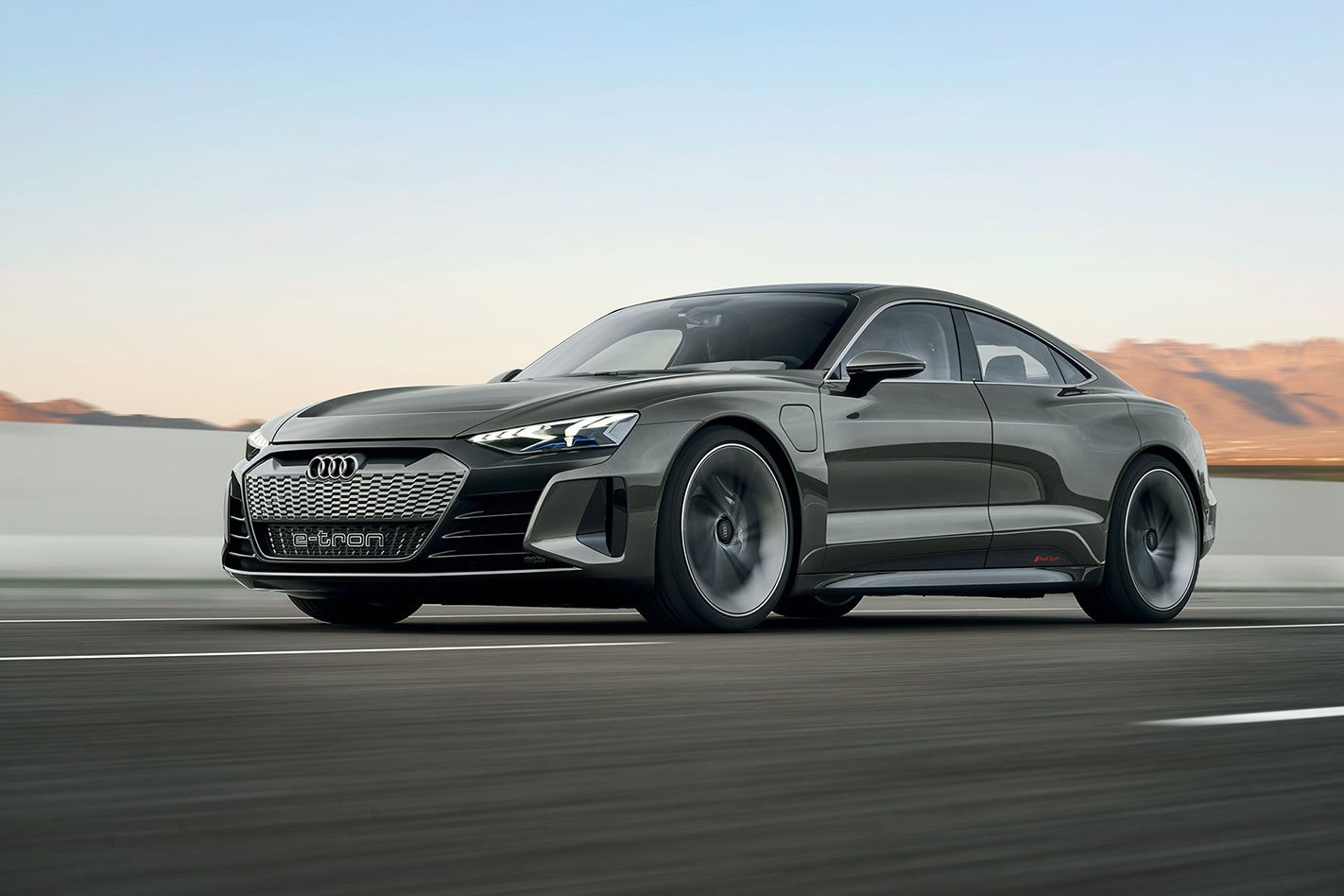The planet may be heating up, but thankfully so is the pipeline set to deliver some of 2020’s most exciting new metal. Here’s a snapshot of some of the cars we’re pumped to bring you as the automotive world shifts into a new gear.
VOLKSWAGEN ID.3
What is it?
The opening EV salvo from an automotive giant that’s betting the farm on electrification. This Golf-sized five seater is the first vehicle to be built on VW’s new MEB architecture, which will underpin at least five all-new EVs to be rolled out over the next few years. The ID.3 is rear-drive, thanks to its aft-mount motor that produces 150kW/310Nm, and globally, the car will be offered with three battery sizes: 45, 58 and 77kW/h. Locally, the talk is of a sub-$50K tag when it eventually goes on sale here.
Why we’re excited
If the senior brass at VW can be believed, (no Dieselgate quips please…) the ID.3 will have exterior dimensions as compact as a Golf, interior space closer to a Passat, and deliver the performance punch of a Golf GTI. Further, the ID.3 has the potential to be the best-realised ‘affordable’ EV on the Australian market, delivering a design freshness and crisp dynamics missing from the dowdy Nissan Leaf. Fact is, this class of car is arguably best placed to take advantage of an EV powertrain: used mainly in an urban environment, where the instant torque and single-speed transmission is best appreciated, and mostly charged from home, negating any potential public-charger drawbacks.
What could go wrong?
Probably not much more than the usual EV caveats, like higher-than-anticipated price, real-world range falling short of the claim, and perhaps less-than-perfect calibration of torque delivery relative to ESC intervention. As long as the chassis tune can deftly manage the inevitable weight, there should be little to fear here.
CHEVROLET C8 CORVETTE
What is it?
The eighth generation of Chev’s iconic sports car, headed to Oz in factory RHD form for the first time. We’re expecting a price tag of around $170,000, so it’s primed to occupy a lofty perch, but packs the firepower to do battle with some elite exotics costing twice the money.
Why we’re excited
A mid-engined V8 sportscar is always guaranteed to open the tap on the adrenal glands, and the C8 promises plenty, not just in raw speed, but in its ability to deliver a deeply immersive driving experience. Further, reports suggest the C8 also works great as a fast GT, with ample luggage room, leggy gearing from the eight-speed dual-clutch transmission, and well-contained road and engine noise.
What could go wrong?
Will the steering connect the driver to the chassis with the level of intimacy a mid-engine sports car demands? Our first State-side drive suggests the rack is quick and accurate, but not the last word in terms of communicating how the front tyres are dealing with cornering loads. Then there’s the relative lack of high-rev headroom from the pushrod V8. We have plenty of love for this small-block V8 (a version of which powers the 2SS Camaro) but peak power is developed below 6500rpm and the rev-limiter not far beyond that number. Will the lack of a thousand or so revs blunt the driving experience? (Ah, probs not…)
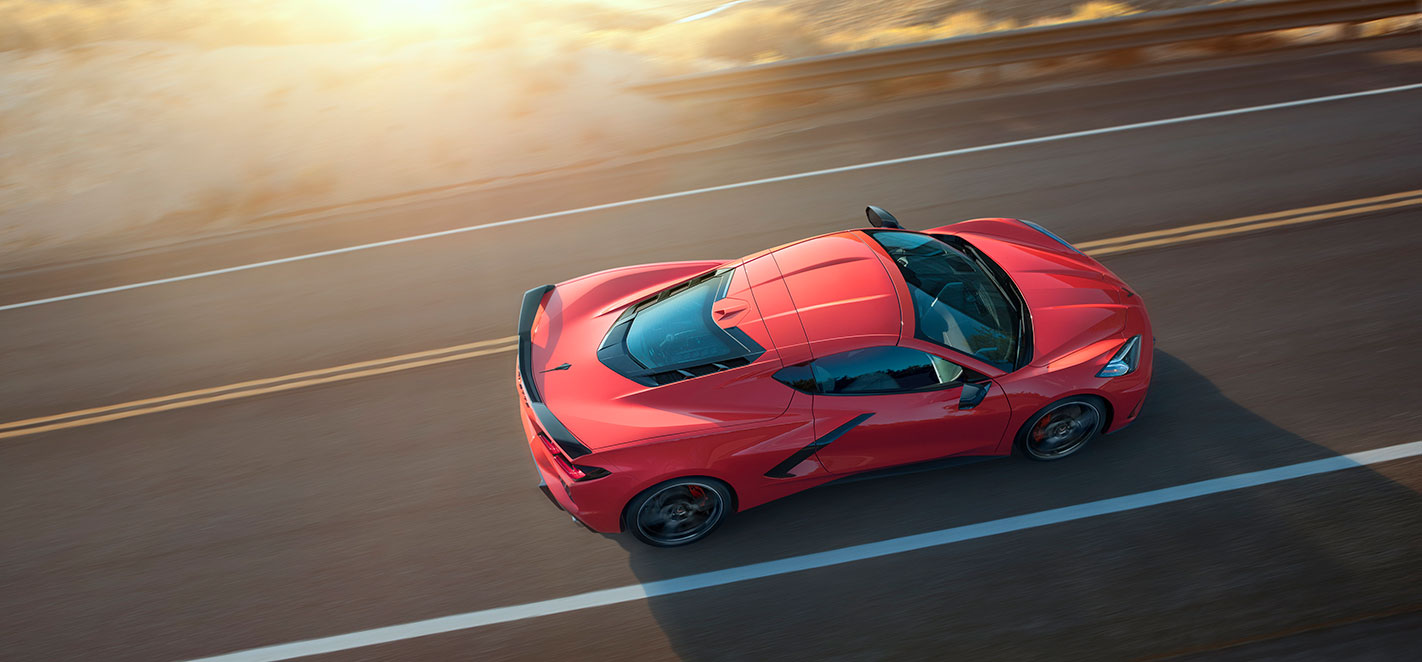
AUDI E-TRON GT
What is it?
Audi’s flagship EV; a five-seater liftback jointly developed with the Porsche Taycan. It runs a motor on each axle which should combine to deliver a total output of 434kW/900Nm, enough for 0-100km/h in 3.4sec. It will be capable of 350kW ultra-fast charging, and have a range of around 400km.
Why we’re excited
Because we’ve driven the Taycan, so we have a fair idea of the potential of the e-tron GT. What we don’t know is if it will be gifted with the same level of chassis tech as its VW Group stablemate, like four-wheel steering, and active anti-roll. Regardless, what we should be able to count on is that almost supernatural ability of a performance EV to transmit your intentions and inputs into pure speed and scythe-like corner carving. And being an Audi, we’re pretty confident the interior will be something very special.
What could go wrong?
For more than a decade, fast, flat-handling flagship Audi sports cars have delivered rev-hungry performance accompanied by a manic, V10 howl; not the most tuneful of exhaust notes, but one always sure to raise the hairs on the back of your neck and stun the birds from the trees. There will be none of that here, so it’s the new world order of golden silence we have to get used to. Will the GT’s massive torque delivery via incisive throttle response be sufficient to compensate? Then there’s the steering, which we hope will be calibrated by the Audi Sport division, and involve the driver, rather than isolate.
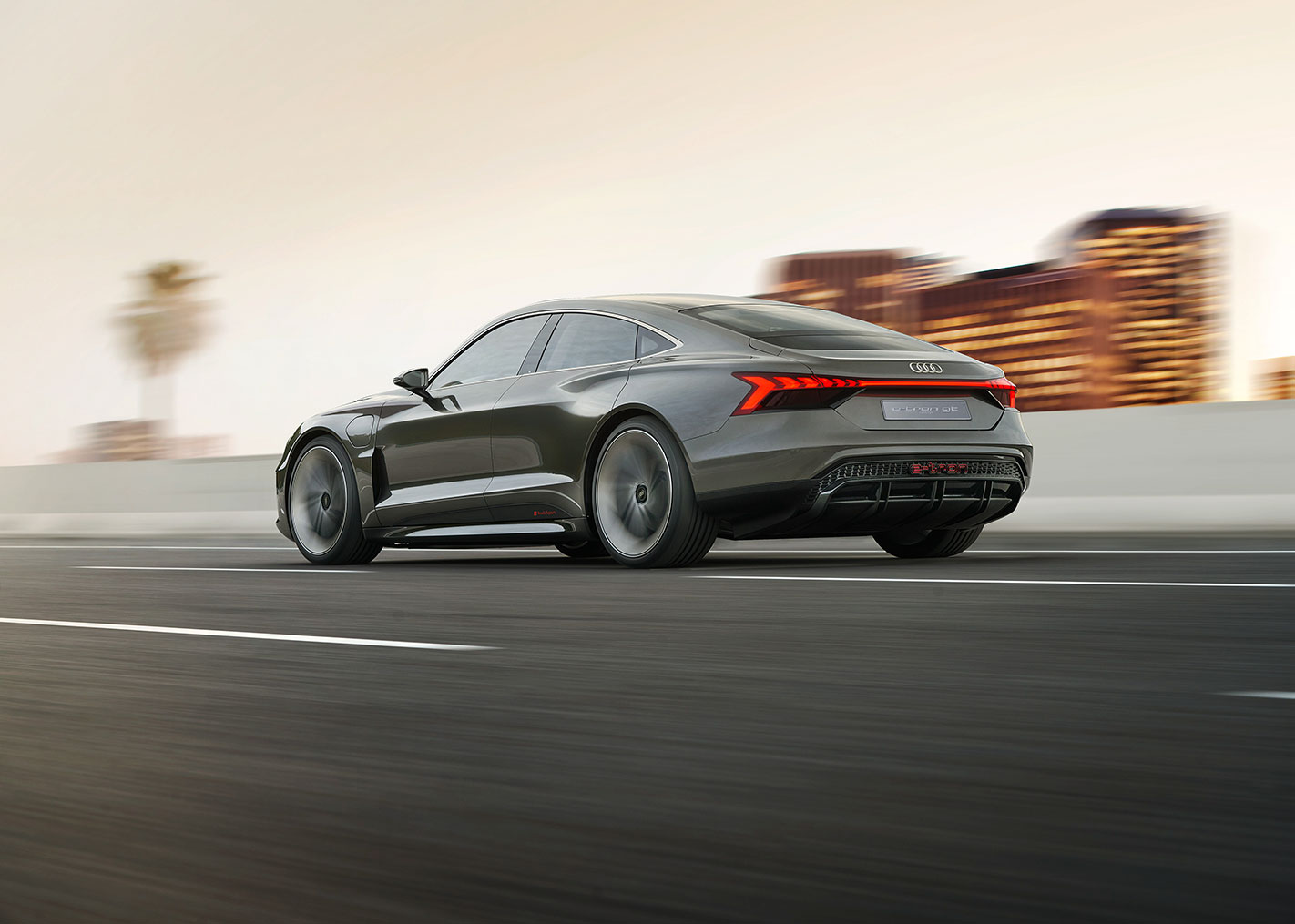
MERCEDES-AMG GT BLACK SERIES
What is it?
The final, fastest, meanest hurrah for AMG’s sports coupe flagship. The Black Series moniker has always been reserved for the most focused AMG variants, and we expect the GT to be properly hardcore. It will have to be to bloody the noses of Nordschleife heroes like Porsche’s 911 GT2 RS and Lamborghini’s Aventador SVJ, the two vehicles which AMG claims it has performance benchmarked.
Why we’re excited
Black Series should take the ethos of the 430kW GT R Pro model and ramp it up to 11. Most intriguing will be the engine; specifically how AMG will extract the projected 520kW needed to mark turf in this space from the existing 4.0-litre twin-turbo architecture. Rumours are swirling that an extensive redesign will see unique internals, along with the highest level of boost yet applied to an AMG engine. The aero package will also be next level; essential for a proper crack at a Nurburgring lap time worth shouting about. Expect lots of tiny servo motors making flaps and wings go ‘whir’…
What could go wrong?
The inevitable on-road compromises when a performance car is wicked up out of its skin in the quest for race-track bragging rights: a brutal ride, punishing road noise due to reduced sound deadening and huge rubber, and restricted rear visibility due to aero addenda. However, don’t expect any of this to deter buyers, who will no doubt be queuing up to add this limited edition to their collections.
LAND ROVER DEFENDER
What is it?
Just your run-of-the-mill off-road icon, that’s all, redesigned from the ground up some 71 years after the first one was produced. It will be offered as a ‘90’ (which means three-door) and ‘110’ five-door, with five, six or seven seats. It switches from body-on-frame construction to an aluminium monocoque derived from the D7 platform of current Range Rover, Range Rover Sport and Land Rover Discovery siblings.
Why we’re excited
JLR know the value of heritage, and are experts at tapping into this while delivering all the comfort and convenience buyers want in a 4×4. This is an off-roader that will make you want to plan an adventure. Defender’s platform is said to be 95 percent new compared to that used in existing models, and is dubbed D7x – denoting ‘extreme’. Land Rover says it’s the strongest, stiffest structure it’s ever engineered. As is the case with the other 4x4s in the line-up, that also means the Defender has switched from solid axles to double-wishbone front and independent rear suspension. Customers can opt for either coil-sprung suspension or air on the 90s, while the 110 variants are only offered with air suspension.
What could go wrong?
Getting bogged is unlikely to be one. No, the only real concern may be how the 2.0-litre diesel four cylinder in the entry-level Defender may deal with the weight, which will exceed 2100kg as a minimum. Way more appealing is likely to be the new 3.0-litre in-line petrol six, with turbo and electric compressor, churning out sufficient mumbo to push the Defender to 100km/h in 6.0sec. The only other concern may be the ride on steel springs, given that wheels up to 22 inches are on the options list. Just say no.
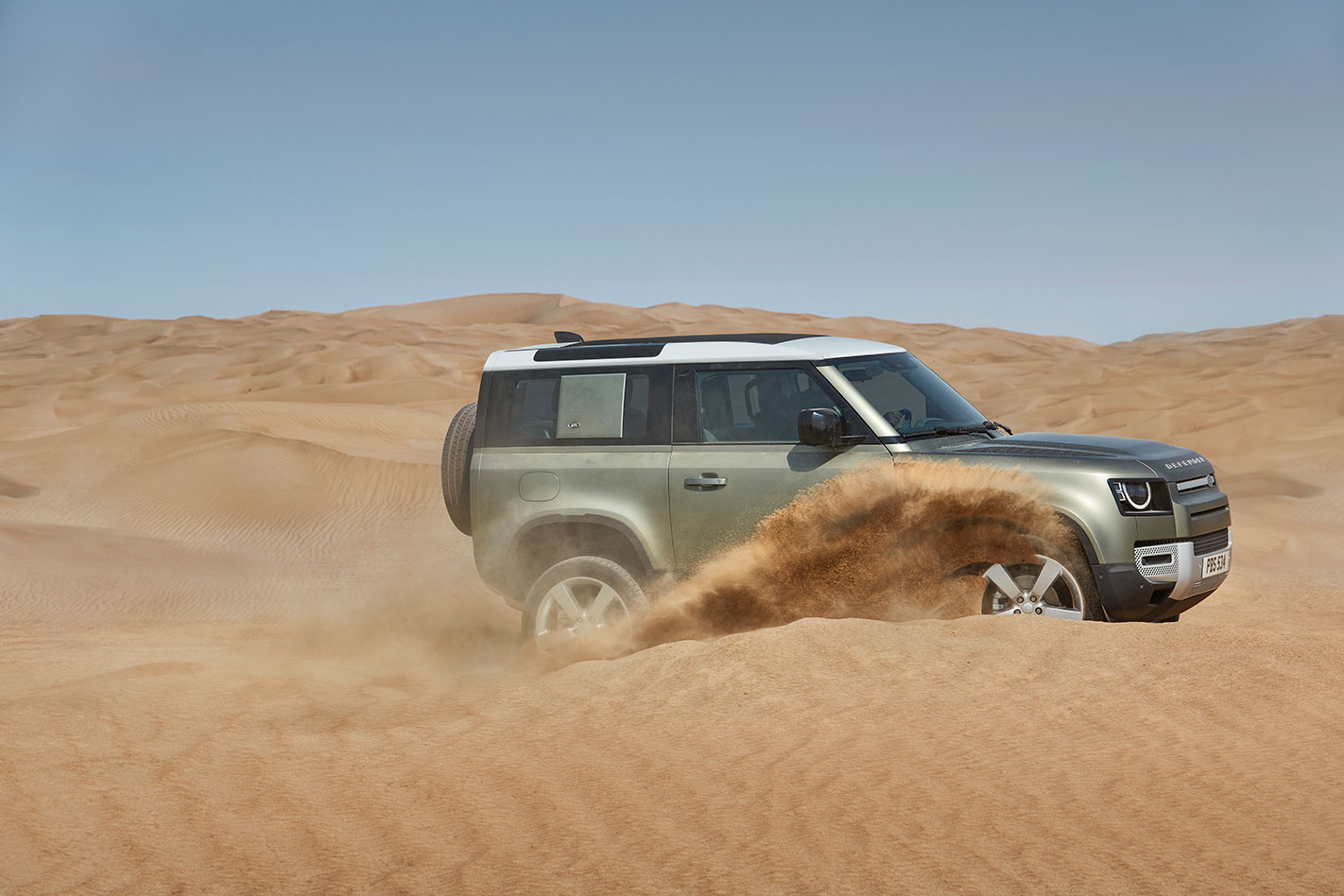
VOLKSWAGEN T-ROC
What is it?
The T-Roc is a VW crossover that aims to plug a gap between Golf and Tiguan. It’s built on the MQB platform, and hopes to attract buyers who want an elevated driving position, but for whom a conventional SUV is a bit staid and soccer-mum. Think funky colours, contrasting roof, and the option to bring a splash of individuality to liven up what would otherwise be a slightly austere VW interior.
Why we’re excited
At this stage Australia will get just one high-spec T-Roc next year, the 140TSI R-Line, powered be a detuned version of the Golf GTI engine driving all four wheels. The 2.0-litre turbo-petrol four punches out a handy 140kW and 320Nm, channelling this via VW’s ubiquitous seven-speed dual-clutch gearbox. Figure on this being adequate for a 0-100km/h sprint in 7.2sec, while using a combined 6.7L/100km.
What could go wrong?
Here’s a new arrival for 2020 that would seem to have niche hit written all over it. If you’re after something more pragmatic, maybe wait for the T-Cross, as it could prove to be the more compelling package. As for T-Roc pricing, expect a tag of around $40K before you even start to dip into the options list, which will no doubt raise the prices.
PORSCHE 911
What is it?
The dawn of a new decade will bring us the option of a manual gearbox for 911 Carrera and Carrera S models; a reprise of the seven-speed unit from the 991.2. Yes, take-up will be tiny, but let’s be grateful it’s still on the options list. DIY downshift blips? Happy days.
Why we’re excited
Then there’s the 911 Turbo, which will elevate Porsche’s AWD hero onto an even higher plane, thanks in part to larger turbos and revised intercoolers for the 3.8-litre flat six. Outputs jump from 427kW/750Nm for the outgoing 991.2 Turbo S, up to 478kW and a whopping 800Nm, while the dual-clutch transmission gains an extra ratio, for a total of eight. So if you thought the 0-100km/h time of 2.9sec for the current car was a bit on the snoozy side, that will be trimmed to an altogether more sprightly 2.6sec.
What could go wrong?
We’ll also get the juicy tech details on the hotly anticipated GT3, even if seat time in this sublime weapon will have to wait until 2021. And we might be staring down the barrel of the last naturally aspirated 911s.
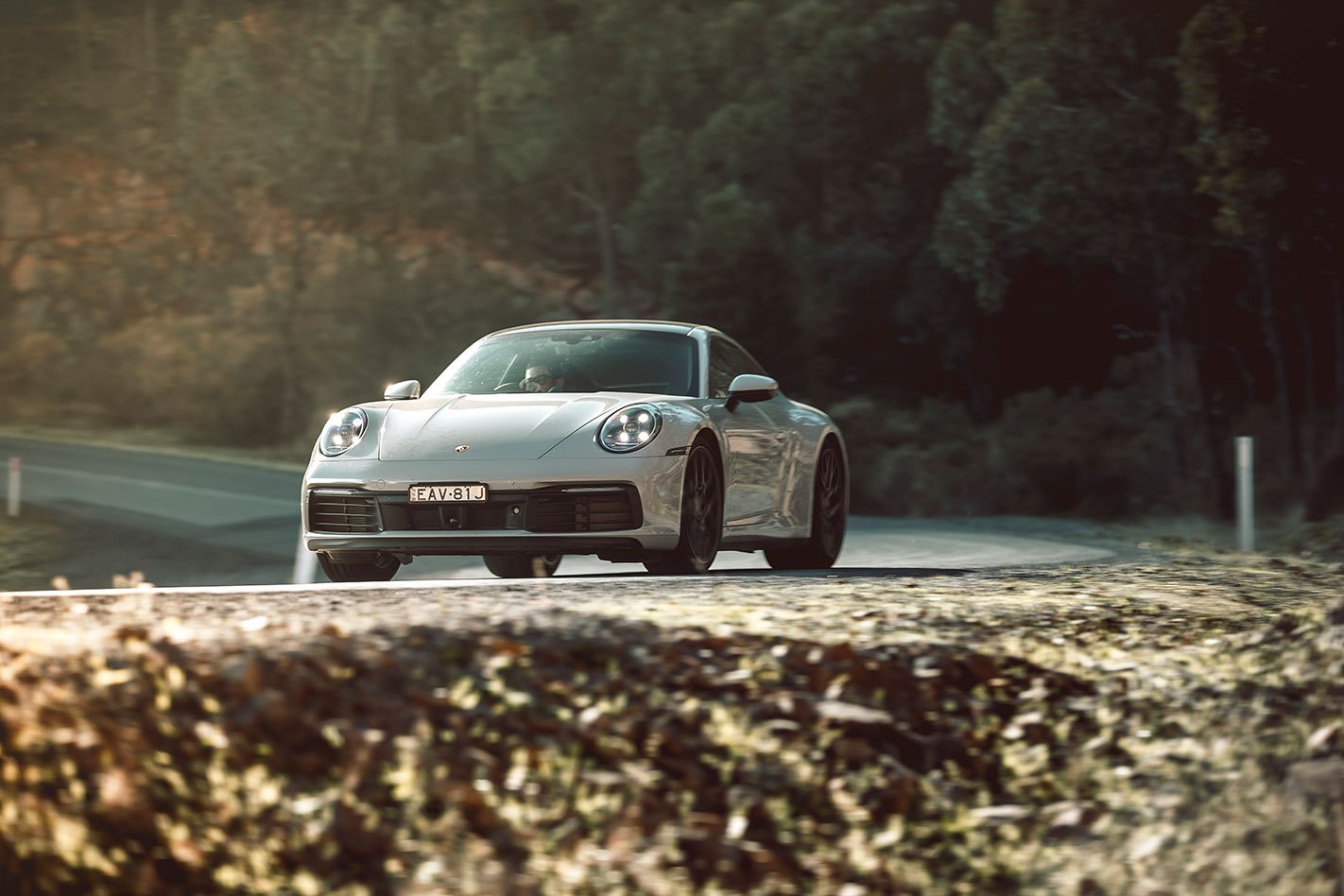
CADILLAC CT5
What is it?
This is the replacement for the CTS and ATS sedans, and uses their GM Alpha platform, but features a longer wheelbase. Two engines are offered initially: a 2.0-litre turbo four, and a 3.0-litre twin-turbo V6, the latter cranking out 268kW/550Nm. Both engines are mated to the 10-speed automatic transmission jointly developed with Ford. All variants in the CT5 line-up are offered with rear-drive or optional all-wheel drive. A limited-slip diff, Brembo brakes and adaptive dampers are among the tastier bits on the menu.
Why we’re excited
The CT5-V to really get excited about, though, is the Blackwing, rumoured to be under development and targeting a launch in 2021. This is tipped to run the new 4.2-litre twin-turbo V8, and be a credible performance rival for the likes of the Mercedes-AMG C63.
What could go wrong?
Okay, so Cadillac in Australia has a significant question mark over its head for now, but we’re still keen for a steer of the new CT5 mid-size sedan, due for launch in the US in the first quarter of 2020.
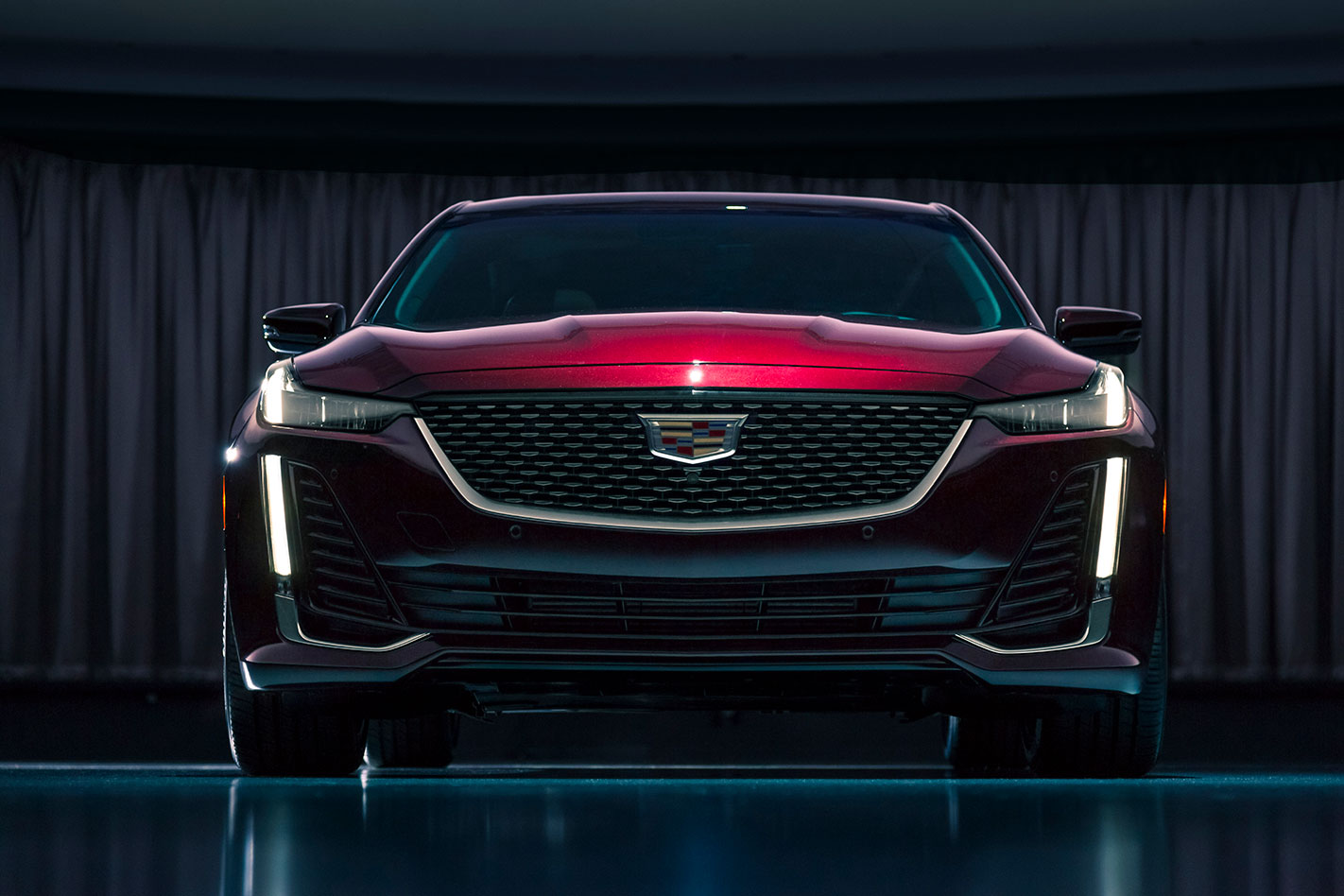
POLESTAR 2
What is it?
What comes after one? Two. Hence the sedan-ish Polestar 2 that follows the gorgeous hybrid Polestar 1. Unlike that coupe, Volvo’s performance arm has chosen to go all-electric for its second model. In reality it’s more a jacked-up, Cross Country-style three-box sedan with Volvo’s chic styling and ‘Thor’s Hammer’ headlights.
Why we’re excited
As you’d expect from the electric motors on both the rear and front axles, its all-paw performance is brisk. The key figures are 300kW and 660Nm delivering a 0-100km/h time of 4.7 seconds. The 78kWh lithium-ion battery pack is good for a projected 500km range (WLTP). A Performance Package is available, featuring beefed-up Brembo brakes, Ohlins dampers, 20-inch forged alloys and gold seatbelts. Inside a large iPad-style central screen dominates and runs Google’s HMI technology. Oh, and the cabin is vegan friendly… seriously.
What could go wrong?
Polestar announced the 2 will be both left- and right-hand drive, but local availability isn’t yet confirmed. Either way, watch out, Tesla.
VOLKSWAGEN GOLF MK8
What is it?
While the Mk8 nomenclature alludes to an all-new car, the eighth-generation Golf is based on a revised MQB platform. The exterior looks evolutionary, but the design has a revolutionary purpose with the lower front end aiding pedestrian crash protection. Most dimensions have grown to afford more cabin space. The wheelbase expands by 16mm (2636mm) for increased rear legroom. It’s also 4mm taller (1456mm), which adds to headroom.
Why we’re excited
We’re excited about the cabin with its fresh look and increased tech. There is a 10.0-inch screen (with third-gen MIB infotainment and WeConnect Plus), a digital dash and a capacitive panel of buttons. The engine options revealed include three turbo-petrols with 48v mild-hybrid systems (81kW, 96kW and 110kW), while the top-spec plug-in hybrid GTE will pack 180kW with 60km of electric-only range.
What could go wrong?
Mk8 pricing is yet to be announced and we’re awaiting GTI and R details. Oh, and don’t expect it to lob down under until late 2020.
BMW M2 CS
What is it?
The BMW M2 CS is the crowning glory of the current 2 Series Coupe range. It looks the part, too, with optional gold wheels and a brawny, beefed-up design. It comes with an array of carbonfibre reinforced plastic bits and pieces, mainly centring around the front splitter, roof, bootlid strip spoiler and rear diffuser. It also gains adaptive dampers, something the M2 Competition misses out on, and grippy track-focused rubber. The interior gains CS-specific logos as well as swathes of suede and carbonfibre.
Why we’re excited
It’s a two-door, rear-drive coupe with M4 levels of stonk in a diminutive package. Make that several boxes ticked. Oh, and you can have it in a manual – now you’re really concentrating. The S55 straight six packs 331kW and 550Nm of turbocharged goodness, enough to propel the CS to 100km/h in 4.0sec when equipped with the seven-speed DCT transmission. Add two tenths to that figure if you want three pedals.
What could go wrong?
Prices and availability down under are yet to be confirmed. How many we’ll get, and when exactly they’ll land, is yet to be determined. There’s reports that customers are already getting in on the action, so if you want one, start the process now.

TOYOTA GR YARIS
What is it?
Take a humble Yaris, add all-wheel drive and a lively 192kW/360Nm turbo triple, and you have the makings of something special. Throw in good rubber, wider tracks, body-hugging seats and extra go-fast addenda and there’s a recipe for success. The Toyota GR Yaris is the Japanese marque’s celebration for its rally prowess.
Weight, despite all-wheel drive, is relatively low at 1280kg. That’s largely thanks to the use of carbonfibre and aluminium body panels. Grip levels should be high with all-paw traction, but the 225/40 Dunlop SP Sport MAXX tyres will aid this, while stopping power is covered off with ventilated discs (356mm front and 297mm).
Why we’re excited
It’s basically a road-going rally car made by the gurus at Gazoo Racing. What’s not to get excited about? Toyota claims that the little Yaris will reach 100km/h in “less than 5.5 seconds,” making it quicker than the upcoming Ford Fiesta ST. It will also go on to a claimed top speed of 230km/h.
What could go wrong?
We won’t get the GR Yaris Performance Pack down under – which is a real shame when you learn what’s in the pack. It includes Torsen limited slip diffs, Michelin Pilot Sport 4 S tyres and specific suspension settings. We also don ‘t know how much the GR Yaris will cost by the time it lands on our shores, of which a date is also yet to be specified.
FORD RANGER RAPTOR V8
What is it?
Out is the four-cylinder diesel, in is the 5.0-litre Coyote V8 plucked from the Mustang GT. The project is sanctioned by Ford Australia, but it remains a local engineering effort. However, you’ll be able to buy one out of a Ford dealer and it’ll come complete with a full five-year warranty. The V8 Raptor will also be built to full OEM durability and safety requirements. So you’ll still get the rugged looks and the Baja-ready Fox shocks, just with much more straight-line speed and an aggro V8 soundtrack.
Why we’re excited
It’s a Ranger Raptor with an engine its off-road-focused suspension deserves – finally. The unit in question is, of course, the 339kW and 556Nm atmo bent eight found in the famous Blue Oval pony car. Oh, and the brakes will be appropriately upsized, too – which is good to know when you’re hauling down the road in a more than two-tonne dual cab. What’s more, we already know that the 10-speed auto is engineered to work with the 5.0-litre V8.
What could go wrong?
As with a lot of the cars on this list, and unknown price is where things could get tricky. When exactly it’ll arrive is also yet to be determined. And, if fitted, the 10-speed auto has already proved troublesome in terms of overheating in the Mustang – so that would need to be rectified.


